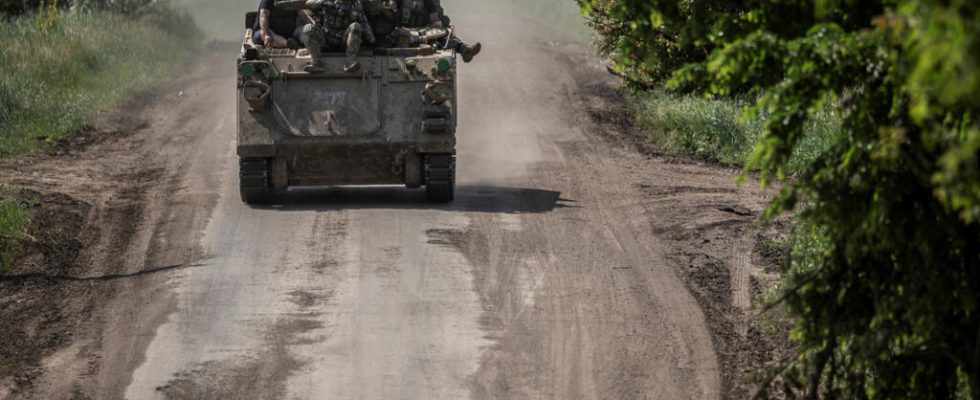For the first time, Ukrainian President Volodymyr Zelensky reported on Saturday June 10 of “counter-offensive actions” by his army on the front. However, he did not confirm whether it was the big attack that kyiv had been preparing for months. These statements come as Russia has been reporting major attacks for six days, including with equipment delivered by Westerners. Interview with Stéphane Audrand, consultant and expert in defense issues
RFI: It is in the south of Ukraine, and in particular in the direction of Melitopol, that the Ukrainian efforts are the most important. Is the counter-offensive, which we have been hearing about for several weeks, taking place?
Stephane Audrand: It has all the characteristics of a real offensive. We saw strikes in the second Russian echelon towards Tokmak to try to neutralize, probably, certain artillery fire support or certain communication nodes. There are always deep shots that continue on Melitopol, on Berdiansk, on Mariupol… So that’s the clue, if we attack on the front line, on these backs and even further, that means that we are not just in the test or the diversion.
On the other hand, what we think is that the Ukrainians are currently testing this Russian front line with fairly great caution. There are nevertheless advances that are reported.
But what must also be remembered is that a line is not just a linear trench. When we speak of the Russian front line, these are strongholds, trenches, mined areas, areas battered by fire several kilometers deep. So, there is not just a materialized line that must be crossed, it is indeed a series of obstacles which are arranged over a few kilometers of depth that must be crossed. That’s why it’s not easy and it’s not in a snap of the fingers that we can say to ourselves, that’s it, that’s it, it’s going to break through.
>> To read also: In the spotlight: the moment of truth for Ukraine
For now, unlike the lightning offensives that allowed the Ukrainians to seize many territories last fall, the Russian lines of defense seem to be holding up?
Russians have been burying themselves for months, and when we say burying, it’s not just digging holes. It is also preparing fire plans, laying minefields. … Obviously, they really put torrents of mines everywhere. Their units are certainly not very well trained, not very hardened, but they are sufficiently so, in any case, to hold out against fire and to call in the artillery. And the Russians still have a lot of artillery, a lot of rocket launchers.
We also see the Russian air force which had been preserved and which can intervene here in relative safety, firstly because it intervenes above its lines. It does not go deep into a territory that is held by the Ukrainians. And even above these lines, when it goes to attack Ukrainian units, the fact that the Russians have been pursuing deep strikes on Ukrainian cities for a long time, it forces the Ukrainians to keep a lot of anti-aircraft systems, especially at short range, in their cities to protect civilian and military targets. So that decreases the air assets that the Ukrainians have and this map of the Russian air force could be a big problem in the face of this offensive.
What should we think of the recent images of a group of Ukrainian tanks, including American Bradleys and a German Leopard, neutralized by Russian artillery?
What we can say about it for the moment, and it is quite significant, is that indeed it looks like a blunder, that is to say that a Ukrainian armored column which was driving quite tightly, probably on an axis that was cleared by armored engineering vehicles, was spotted by drones and had no short-range anti-aircraft defenses to neutralize these drones. So the Russian drones called in the artillery and seeing that the tanks were on a road in minefields, they couldn’t maneuver, they were too close together. There are a few that had to be neutralized and then the column was pinned down. She tried to maneuver on the mines.
What is also very interesting that we see on the images is that these armored vehicles have their hatches open, they did not burn. The difference between the Western equipment and the old Soviet equipment is that obviously the crews for the most part had to survive and were able to get out and therefore the vehicles are undoubtedly salvageable and the people are not dead. Which is still very different. We must therefore relativize. Admittedly, it’s a setback, but for the moment, it’s the only one we see and in quotes, it’s not that serious, it must be able to regenerate.
